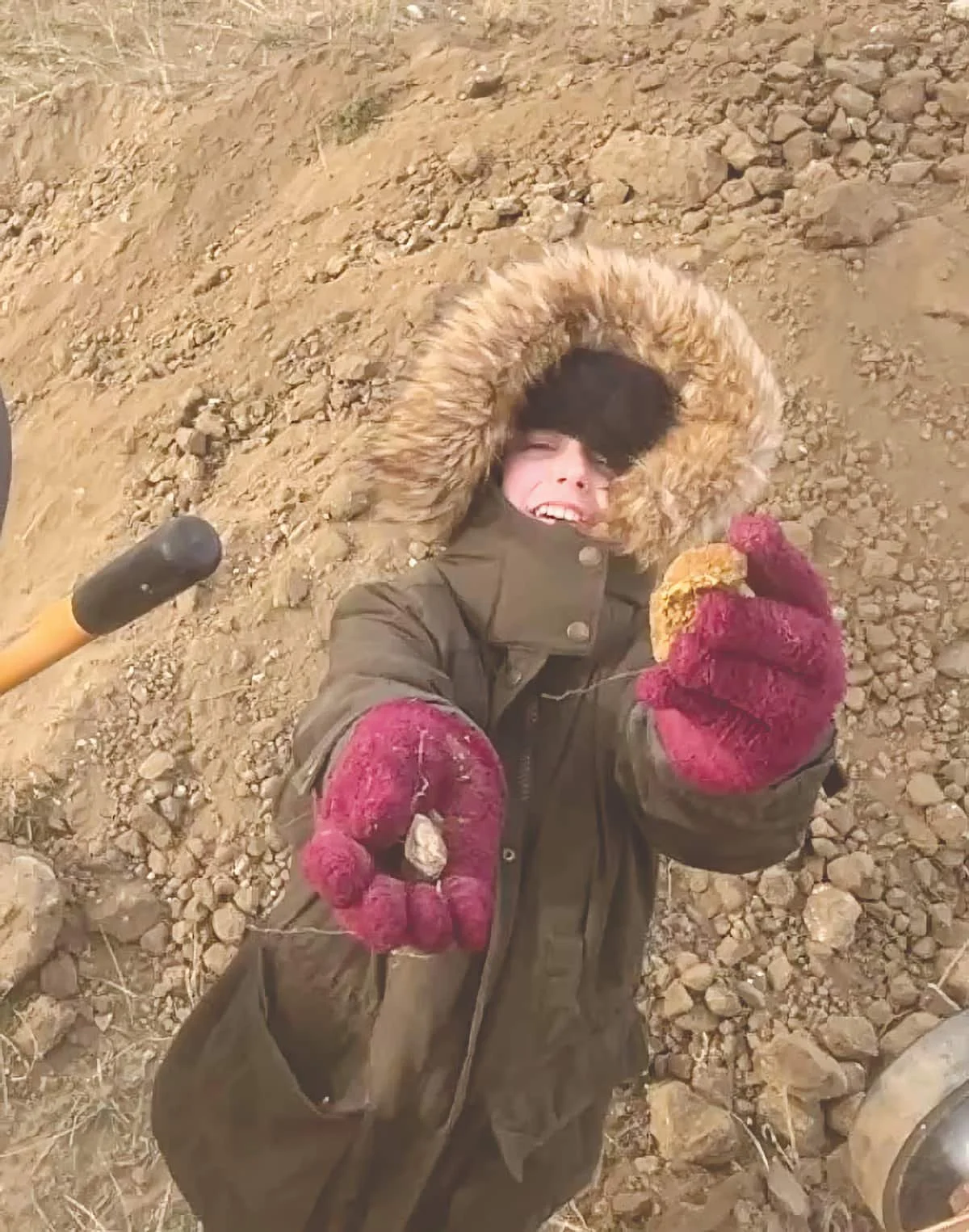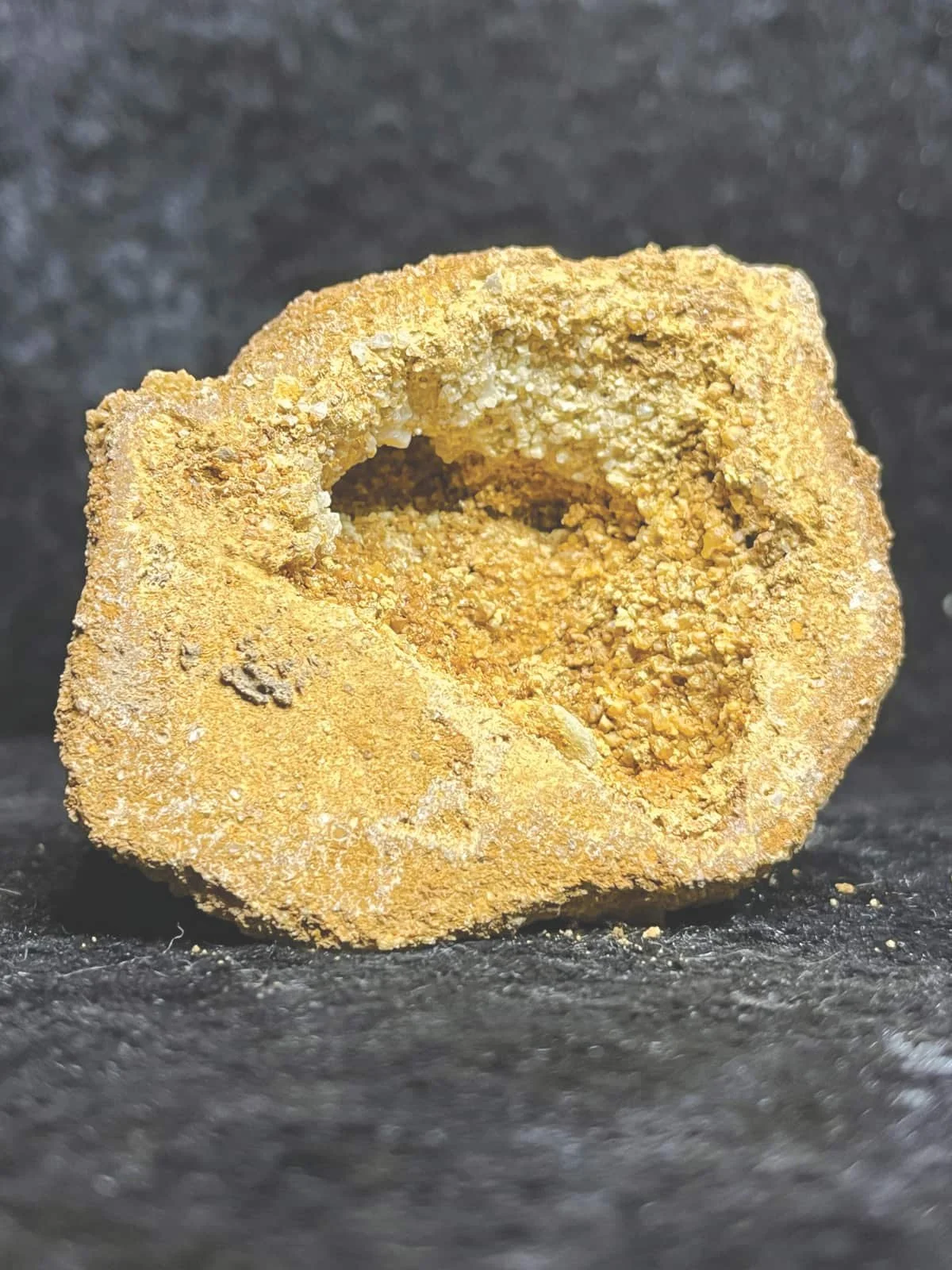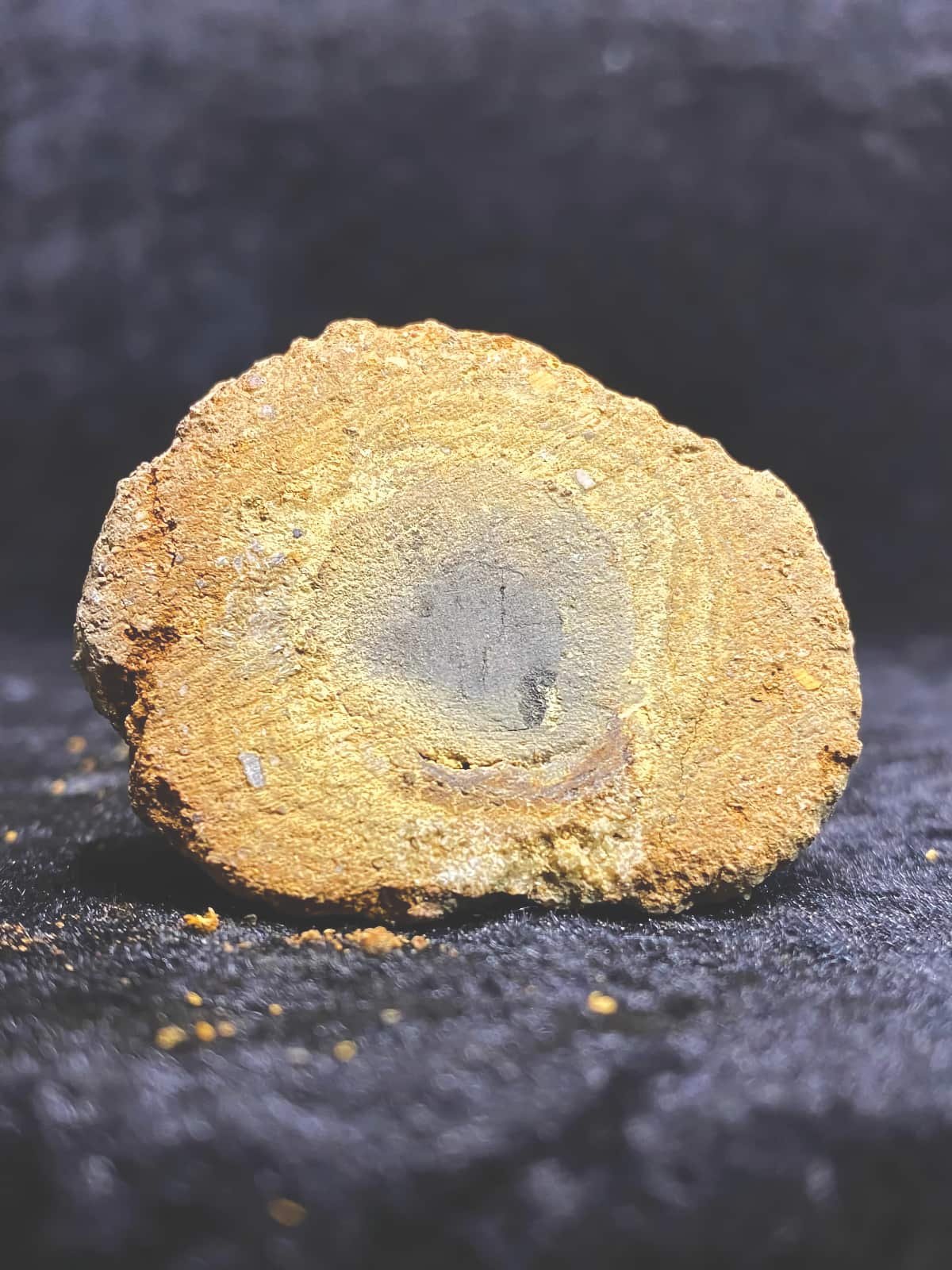Underground Secret of Liebenthal, Saskatchewan
By Reese McCallum
LIEBENTHAL - Many Saskatchewan residents and Canadians love the hobby of rock-hounding. This is the action of searching for amazing stones that bring a thrill and joy to a person’s life. It may involve going out into nature and digging or surface collecting, which is also called “artisanal mining”, or it could even be a person who finds a beautiful specimen that they have been on the search for, and they come in all ages and is done world-wide.
Reese McCallum is 10 years old and is in Grade 5, home-schooled in the Chinook School Division. She is an enthusiastic Rockhounder & Lapidary Artist. PHOTO BY KYLA McCALLUM
Ten-year-old Reese McCallum was excited to find geode-like orange sand balls at her family’s acreage at Liebenthal, Sask. PHOTO BY KYLA McCALLUM
Ten-year-old Reese McCallum was excited to find geode-like orange sand balls at her family’s acreage at Liebenthal, Sask. PHOTO BY KYLA McCALLUM
This article is about a rock hounder in the tiny town of Liebenthal, Saskatchewan. I will refer to myself as “Rock Wrangler Reese”. I’m not a cow herder and I don’t wrangle sheep, but I do round up beautiful stone specimens that I take home to work on my polishing machine.
But not all rocks are for cutting and turning into gemstones because, some rocks are for display so you can strike up conversations with friends, family and people you meet along your journey. I am a rock hunter and I like to watch for neat rocks that are in farmers’ rock piles. I always make sure to ask for permission from the landowner thanks to the help of my mom, and we always find amazing discoveries, even in my own backyard! This is where my story gets very interesting.
I track topography and geology patterns through the satellite imagery on google to understand where my next favourite place is to explore, and mom and I will study formations in the quiet evening while we have a cup of tea. We look at mining maps to learn what is needed for getting a claim or for being allowed to enter properties to rock-hound. Together we investigate if certain kinds of rocks can be discovered in non-rock hounded mysterious places.
Most of Saskatchewan is covered with rocks that have been placed in fields by the movement of glaciers because at one point in time, Liebenthal, SK (my home) was covered in a giant glacier. Over a period of time of 18,000 years the glacier melted, leaving behind many different types of stones like jaspers, serpentines, jade mixes, quartz, moonstone varieties, ironstones, mica blends, and so much more. These are surface stones that were carried from northern locations like the mountains and lots of other geological places. These are stones that are not from the ground deep below but placed on the surface and farmers take time every spring to pick them up to get them out of the way.
And this is where it gets exciting.
I like to learn and find discoveries that are new and original to the locations that the stone is placed deep within the layers of formations. Sharing these discoveries I find with other rock hounders is important because maybe I want to become a Geologist, or maybe I want to own a mine of my own of fancy amethyst that has never been discovered before in my home area, or maybe I want to work for oil and gas and I think this will help me to get better at my skills, to exercise things I love to do and also help others to learn too.
The reason why I am telling you this is because I am very curious about the “gas pool” that I live in that is a main resource of the area of Burstall to Liebenthal, to Fox Valley. I am interested because many locations in the USA that are areas of a gas pool also hold a lot of collectable stones that have phosphorescence. Stones that have this, are UV reactive and sometimes even glow in the dark which is due to the hydrocarbons that create the minerals growing on stones. This makes them a very collectable type of mineral to a rock hound. I often use a UV blacklight to hunt for cool stones in the dark and it’s cool!
With my discovery I have found that the Liebenthal area has much covering of sand and silt as the top layer, and grey marine claystone, shale, and siltstone below. But many layers have sulphuric properties. Many of the residents that grew up in the area mentioned to my Mom and I about the taste of the well water, that their water that they used over many years as children, had a rotten egg smell and was difficult to enjoy, even if it was 500 ft below the ground.
So this is where I am about to tell you my exciting discovery! Here in Liebenthal, Saskatchewan we are on an off-grid farm site where there are no city plumbing or underground service pipes where the town helps your septic system. My family and I run a small rocks and mining history museum called the Dusty Compass Museum in the summer, and my museum needed a bathroom. So to solve this missing service for my customers my mom started digging with our excavator in the fall, for our new visitor’s old-fashioned outhouse and I stuck around to help her, so I could watch for amazing discoveries as she moved dirt to dig a hole. As she was digging in the small space she worked, I noticed incredible orange balls and I had to wave to Mom to stop construction, so I could get a closer look! I collected a total of 30+ of these geode-looking orange sand balls and I set them off to the side. Later that day I washed and cleaned them up and allowed them to dry. Once they finished drying I took them to my saw (I use a lapidary saw to cut and polish my carving creations) and sliced them right down the middle and WOW! These were beautiful and exciting!
I have done my research and these incredible specimens that are beneath layers of sandy sediment are nicknamed quartzose sandstone. Some have either a small centre of coal as if a fossil insect might have been the original centre rolling along, and some have hematite centres as if it was a gas bubble. Many however contain beautiful micro crystal quartz points similar to a typical geode inside. They are a mixture of sulphur oxide clay with rings of iron rich mud that look very similar to tree rings. Some are named “Paint Pot” geodes or “mars marbles”. They were developed over time with the growing layers of silt as the Great Sandhills sand dunes shifted, dried out underground and overtime eventually were covered with plant life and shrubs.
I have decided to give these amazing specimens a name called “Cypress Geodes” and when found on the surface, would be an incredibly cool and rare find that many rock-hounds would like to add to their collection!
So if you find a really neat treasure, take your time to look it up and investigate. Find out what you have found and get out there to explore and find real cool new treasures worth sharing!



